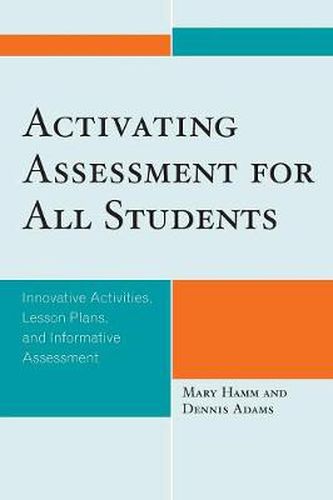Readings Newsletter
Become a Readings Member to make your shopping experience even easier.
Sign in or sign up for free!
You’re not far away from qualifying for FREE standard shipping within Australia
You’ve qualified for FREE standard shipping within Australia
The cart is loading…






Hamm and Adams present models to help teachers identify student learning problems_recognizing when to re-teach, when to move ahead, and when to explain or give more examples. Activating Assessment for All Students takes all of these into account when it provides differentiated science/math methods and goes on to suggest ways that formative assessment practices can inform differentiated teaching, learning, and assessment. These methods promote success for more students by helping teachers develop informative assessment for lessons and related tools for reaching the varying levels of student competencies within their classes. This book builds on the expanding knowledge of what works in classrooms and suggests approaches that can open up individual and group possibilities for science and mathematics instruction. It intends to help you answer the following questions: * What is differentiated instructional assessment? * How can I amplify the results of DI by using formative assessments? * How might quality assessment tools (like portfolios) benefit all students? * How will I know that differentiated formative assessment works?
$9.00 standard shipping within Australia
FREE standard shipping within Australia for orders over $100.00
Express & International shipping calculated at checkout
Hamm and Adams present models to help teachers identify student learning problems_recognizing when to re-teach, when to move ahead, and when to explain or give more examples. Activating Assessment for All Students takes all of these into account when it provides differentiated science/math methods and goes on to suggest ways that formative assessment practices can inform differentiated teaching, learning, and assessment. These methods promote success for more students by helping teachers develop informative assessment for lessons and related tools for reaching the varying levels of student competencies within their classes. This book builds on the expanding knowledge of what works in classrooms and suggests approaches that can open up individual and group possibilities for science and mathematics instruction. It intends to help you answer the following questions: * What is differentiated instructional assessment? * How can I amplify the results of DI by using formative assessments? * How might quality assessment tools (like portfolios) benefit all students? * How will I know that differentiated formative assessment works?